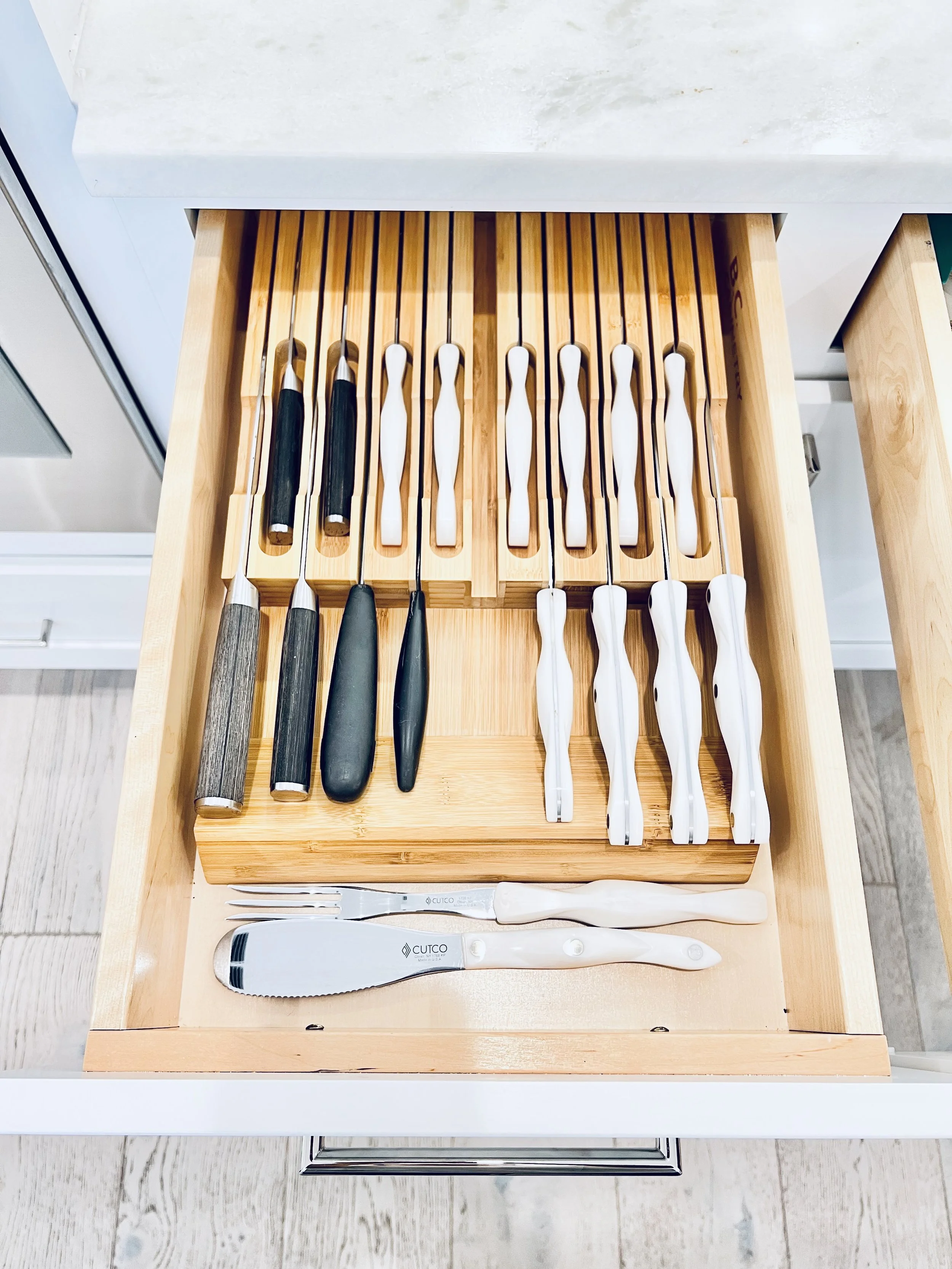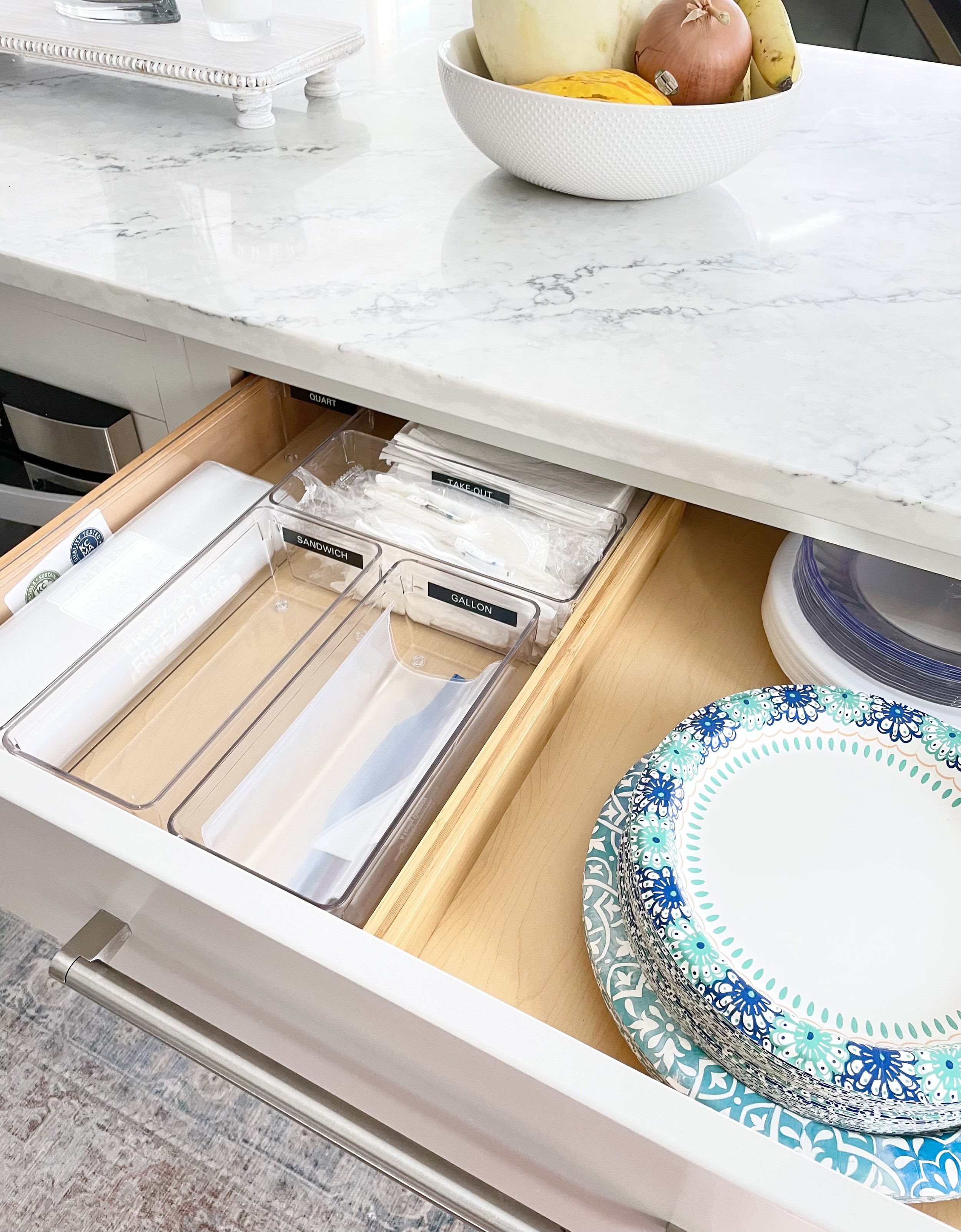Kitchen Organization - Step By Step
What thoughts come to mind when you think of your kitchen? To me, it’s an important part of the house, a place to nourish the body as well as the soul. My family begins the day with “good morning” greetings and eating breakfast together before work or school. Sometimes I wake up earlier than they do, and as I start my morning coffee ritual, I take some quality alone time to reflect on how I will plan out my day. We cook meals here, and as we do, it’s comfortable for all to congregate around the counter and conversate with each other. During parties, friends gravitate there to refresh their wine glasses and continue mingling. Inviting for one or for many, we can’t help but regard the kitchen as the “heart of the home,” with all its warmth and vitality.
Before organizing your kitchen, consider the following: Is there someone who does the cooking? How often do they cook? Do you have a coffee, smoothie, or other similar routine in the morning? If you have children, would you want their cups and plates easily accessible for them? Providing an area for young children to retrieve their items will help make them become more independent, but be aware of their accessibility to potentially harmful items like knives or medicines. Do you entertain guests in your house? Which small appliances do you use most often? Which are seldom or never used? Often the kitchen counter and/or island is a collection spot for clutter. Make systems to avoid this, such as designating a spot to place mail for each member of the family.
STEP BY STEP
You know the drill! Organizing your kitchen is no different from organizing any other part of your house. But in case you’d like a refresher, we’ve got you covered.
1. Empty out all the drawers and cabinets and group similar items together. Familiar categories include items like utensils, dishware, pots and pans, appliances, and cleaning supplies. After that, you may have bakeware, entertainment platters and serving sets, and cutting boards. And let’s not forget about the items in the ubiquitous junk drawer!
2. Clean, clean, clean. There’s no better time than the present to do it while everything is out and you’re available.
3. Go through each category and decide what is used and loved. Let go of the rest. Be realistic. Sometimes things like ice cream makers, pasta makers, fondue sets sound like a good idea but how often (if ever) do you use it. The less you own, the less you have to clean, tidy, and organize. Simply your life.
4. Make a plan on where things should live and use our recommended products to help organize (see below for tips).
5. Maintain regularly and take a few minutes to reset at the end of each day.
SPACE PLANNING + ORGANIZING TIPS
Now it’s time to divide and conquer. Create zones that make sense. For example, place cooking utensils nearest the stove, dish cloths and towels close to the sink, and daily dishes next to the dishwasher. You can easily create zones in drawers with adjustable bamboo dividers to separate and contain bento boxes from food storage containers or in the utensil drawer to separate the citrus juicers from the wine openers. Acrylic drawer dividers also help in the junk drawer to compartmentalize all of the miscellaneous items like office supplies, stamps, and portable hand sanitizers. Wherever the zone, make sure they’re accessible to you. If necessary, adjust shelves in cabinets; you want them to be as low as possible so things are easy to reach.
Besides creating actual zones in drawers and cabinets, generate sections in the kitchen based on habits. If you tend to prep food or bake in a certain part of the counter or island, have those items you would use around that area to serve you when needed. For instance, place spices in a nearby drawer or cabinet when you intend to pre-marinate those pork chops on the island directly across the fridge. If the cabinet is the location of choice, add oils there along with the spices due to ample shelf space.
Keep in mind of the practicality of your items. Do you need multiple specific kitchen tools like a banana slicer or apple slicer when a good kitchen knife can do the trick for all scenarios? Free up real estate depending on what you use most frequently. Seldom used items like platters, large pots, and party supplies can likely live in another area of the house like a storage closet if you are short on space. And don’t forget to address the clutter on the fridge like old photos, paperwork, and notices.
FAVORITE PRODUCTS
Listed below are some of our favorite products we use daily in our quest to turn our clients’ kitchens into an organized reality. Feel free to incorporate a few or all of them into yours.
bamboo drawer divider – adjusts to the width of deep drawers or utensil drawers to separate and contain the baking sheets from the aluminum foil or outdoor grilling brushes from the salad serving tongs
knife block – a streamlined version of the traditional countertop block but made to fit and reside inside a drawer; keeps the counter clear and knives in a safe place
multi-purpose bin – our go-to under-the-sink storage solution; a variety of sizes to corral the arsenal of cleaning supplies, scrubbing brushes, and trash bags
storage bin with handles – ample room to store the daily medication, afternoon tea bags, and more; integrated handles for good grip; choice of many sizes and finishes for personal fit and style
water bottle organizer – use solo or stack in multiples to create a tidy array of sideways-positioned water bottles
Organizing a kitchen is simple once you declutter and create sensible spaces of purpose based on how you use it. Creating zones and building sections will help immensely in visualizing this goal. Incorporate our recommended products to help create the kitchen that you want it to be. It will make it that much easier to find things you need when cooking that family meal, concocting your next social gathering, or waking up to a good morning brew.




